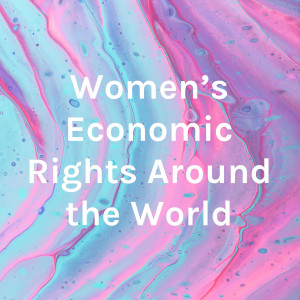
An Inter-relational Approach to Maquila Work and Women's Economic Autonomy in Mexico and the Northern Triangle Part 2
Picking up where I left off in the last episode, I continue to discuss some of my own research, utilizing an inter-relational approach to interpreting high turnover rates in maquiladora industry, which considers economic, social, and cultural factors that work to keep women from pursuing their economic rights.
Castillo, Rafael (2015) “Murdered in México State: The Silent Epidemic of Women Killings in México”. Available at: https://news.vice.com/article/murdered-in-mexico-state-the-silent-epidemic-of-women-killings-in-méxico
Domínguez, E., Icaza, R., Quintero, C., López, S., & Stenman, Å. (2010). Women Workers in the Maquiladoras and the Debate on Global Labor Standards. Feminist Economics, 16(4), 185–209. https://doi.org/10.1080/13545701.2010.530603
Economic Commission for Latin America and the Caribbean (ECLAC). 2019. Gender Equality Observatory for Latin America and the Caribbean. Indicator: "People without incomes of their own." Accessed April 28, 2021. https://oig.cepal.org/en/indicators/people-without-incomes-their-own
Fussell, E. (2000). Making Labor Flexible: The Recomposition of Tijuana’s Maquiladora Female Labor Force. Feminist Economics, 6(3), 59–79. https://doi.org/10.1080/135457000750020137
Latinobarómetro Corporation. 2018. Latinobarómetro Online Data Analysis 1995 - 2018. Accessed April 28, 2021. https://www.latinobarometro.org/latOnline.jsp
Maquila Solidarity Network. Workers in crisis in the garment industry in Mexico: a conversation with the Worker Support Centre | Maquila Solidarity Network. (2021, March 1). https://www.maquilasolidarity.org/en/workers-crisis-garment-industry-mexico-conversation-worker-support-centre.
Marx, S. (2020). Wage and Gender-Based Violence (pp. 1–8). FEMNET e.V. Retrieved from file:///C:/Users/17025/Downloads/wages_and_GBV_FEMNET_position_paper.pdf
Pantaleo, K. (2010). Gendered Violence: An Analysis of the Maquiladora Murders. International Criminal Justice Review, 20(4), 349–365. https://doi.org/10.1177/1057567710380914
Secretaría de Gobernación (SEGOB) [Secretary of Government], Instituto Nacional de las Mujeres (INMUJERES) [National Institute of Women] and UN Women, La Violencia Feminicida en México, Aproximaciones y Tendencias 1985-2014 [Femicide Violence in México, Approximations and Trends] (April 2016) [hereinafter SEGOB Report], page 10.
Taylor, G. (2010). The Abject Bodies of the Maquiladora Female Workers on a Globalized Border. Race, Gender & Class, 17(3/4), 349–363.
Weissman, Deborah M. 2005. ‘‘The Political Economy of Violence: Towards an Understanding of Gender-Based Murders of Ciudad Juarez.’’ North Carolina Journal of International Law and Commercial Regulation 30(4): 795–866.



